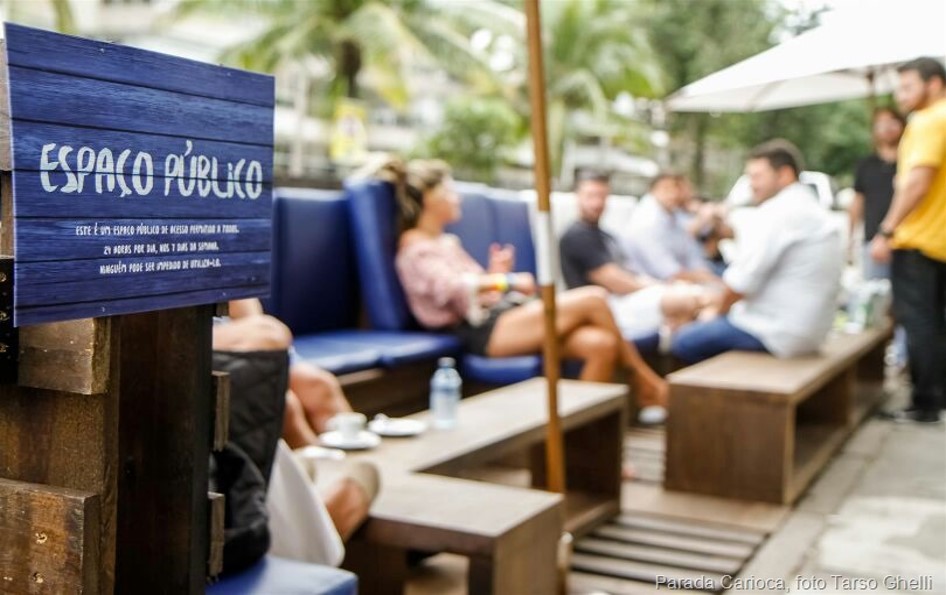
Parada Carioca - a space for people
One of the sub-themes of Velo-city conference 2018 is Learn to Live. This means making the best use of public spaces and finding the right balance so that cyclists, pedestrians, drivers and all citizens may live in harmony. The “Parada Carioca” (Carioca Parklets) in Rio de Janeiro is a good example of a shared public space to be inspired from before taking part in the next Velo-city! A parklet can be indeed an excellent solution to accommodate bicycle parkings.
The city of Rio de Janeiro announced in 2015 the creation of the "Parada Carioca". This is basically a program granting a renewable installation license for permanent living spaces.
The idea of converting public parking spaces into coexistence spaces was conceived in California from the ReBar studio and it was originally developed as a public artistic intervention. In 2006, parklets were introduced for the first time in Brazil and they are now spreading throughout the country. Fortaleza and São Paulo have already authorized their creation, and now it is the turn of Cariocas to be able to requalify the public space adjacent to sidewalks.
History of living spaces
At the beginning, it was necessary to wake up early, reserve a space, bring furniture, artificial grass and set up a bicycle rack. In addition, interested people had to get an authorization from the city hall and establish good relations with cars owners responsible for the area; all that for only one day. The benefits of the initiative were immediately noticeable, rather than two or three cars parked there was a small space of coexistence. The comparison for people who frequented the area was always striking. Instead of a space plenty of vehicles, with no room to cross the street, there was the possibility of moving freely and having some space to rest.

Future Challenges for the Use of Public Space
However, the space for public parking is still in dispute. It is easy to imagine a city with more places for people, but the challenge is to actually design urban spaces suitable for human flow, relax and interaction.
In particular, two challenges need to be addressed. Whoever installs a permanent living space (carioca parade) in front of his commercial establishment gains more attraction and induces a change in the surrounding community. Activism at this regard is necessary in order to catalyze permanent changes.
A guide to occupy public spaces
For cities which have not yet adopted a regulation for permanent living spaces, it is possible to consult the manual on how to create a living space (PDF in Portuguese). The project has been realized through a collaboration between Transporte Ativo and the blog Quintal.
News category:
Network/Project Involved:
Contact the author
Recent news!
Upcoming events
Contact Us
Avenue des Arts, 7-8
Postal address: Rue de la Charité, 22
1210 Brussels, Belgium









